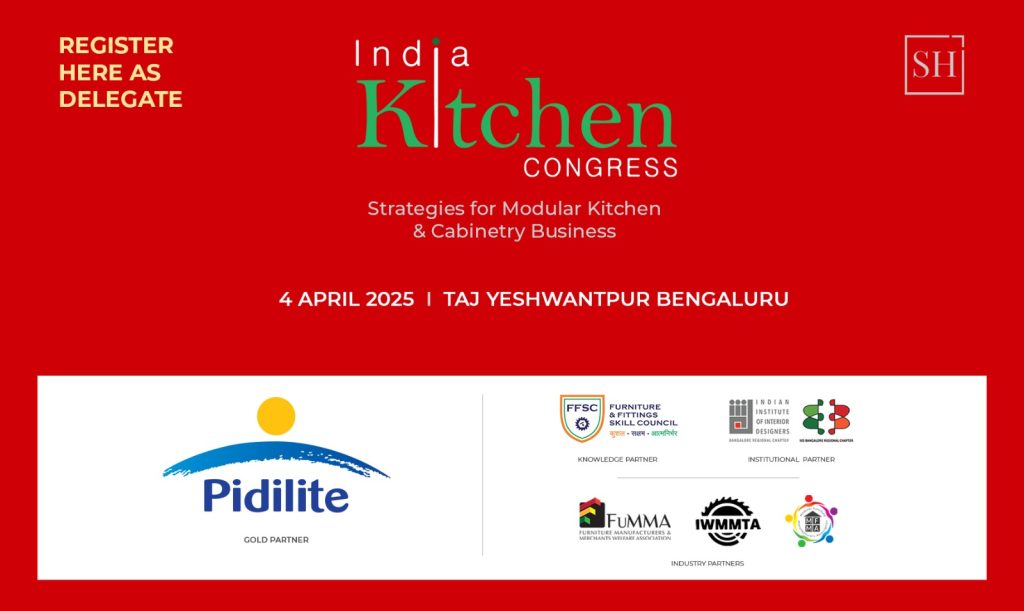Kitchen design is as much science as it is art. And who better to acknowledge this than an award-winning designer?
Mayur Raiyani, winner of the IKC Kitchen Design Award 2024 in the Completed (Modern) category, and design director at FRDC, believes that designers should consider spatial architecture before embarking on the kitchen design itself.
Being a renowned retail design specialist, Raiyani also explains how customer journeys should be curated in the kitchen business. And finally, he explains why participation in industry awards helps designer grow their careers, and what preparation is required.
Here are excerpts from the interview.
What’s the importance of kitchen architecture and kitchen design?
Kitchen architecture is about the structural and spatial plan emphasising how the kitchen fits into the overall home design, considering factors like flow, natural light, and integration with the living spaces. Kitchen design on the other hand focuses on the experience within the space, in terms of visually appealing aesthetics and ultra-functionality for cooking and social activities.
The design process therefore cannot consider kitchens in isolation, rather it needs to respect the environment in which they are designed. Today, kitchens have evolved as workspaces, social interaction points and community celebration spaces.
Designers should also be able to leverage technology, which is an enabler of seamless experience and ultra-convenience in this multi-utilitarian space. Once you integrate tech, the kitchen becomes a workspace which helps save time, especially when working from home.
Both spatial architecture and design are essential for creating a cohesive and effective kitchen space in the context of customer expectations and lifestyle.
How can designers be sensitive to sustainability?
Sustainability in kitchen design is no longer a fad. The need for responsible living is nudging designers to create spaces that are inspiring and functional, yet having minimal impact on the environment, health, resource utilisation and material durability.
Health and well-being have sharply come into focus as important design considerations. Vaastu considerations are also important since this is the science of building positivity by incorporating elements like natural light, air circulation and waste management.
Besides using green materials in the structure of the kitchen, designers also have the responsibility to integrate kitchen equipment that consumes less energy and water and enhances the well-being of the users.
How can designers help retailers deliver a seamless customer journey?
The core objective of the designer should be to curate a journey within the kitchen retail environment, that is not only seamless but also enjoyable and fulfilling for the client.
I have seen many retailers trying out initiatives that don’t work because they do not focus on the customer’s journey. To make the journey seamless, the designer would need to use the right balance of phy-gital technology to enable self-discovery, tell stories about the product, and use wayfinding to communicate the offerings starting right at the storefront.
While strategic displays inspire customers with design ideas and trends, intuitive communication is critical to highlight the features and benefits offered by the brand. Interactive visual merchandising is gaining ground in this segment.
Further, live kitchen displays enable memorable engagement with customers at a social level.
To be successful, designers should understand the needs, motivations, and challenges of the customer right through the journey of ideation, designing, finalising, costing, ordering, production, and installation.
What is the role of technology in the customer journey?
Technology plays a significant role in the kitchen buying process, enhancing both the customer experience and the efficiency of the kitchen design and installation processes. By integrating the right technology, the buying process becomes more efficient, informed, and personalised, leading to better customer experiences and outcomes.
There are technologies available today, like AR, VR, 3D projection etc. However, one must understand the customer’s comfort before deciding which tech to use. Interactive design helps engage more and deliver an enjoyable and fulfilling experience.
How important are recognition and awards for the kitchen designer?
Recognition is an important aspect of acceptance, reputation, and expertise of a designer’s craft. It helps push the bar up in terms of creativity and quality of design, thereby impacting the industry in which it is practised.
It’s not just about participating in awards. It is about how you convey the design’s message. The award entry should reflect the message and the creativity behind your design. Awards are also a good opportunity to connect with the industry and be updated on the latest trends.
Designers should also focus on the process of submitting their entries. Good documentation is critical. Clearly describing how the design was created, using sketches, images and videos, helps convey the message to not just the jury but also the industry.


